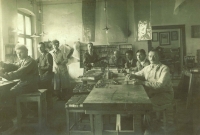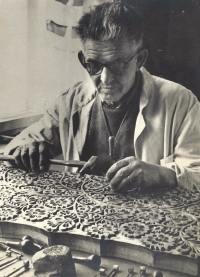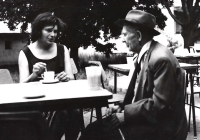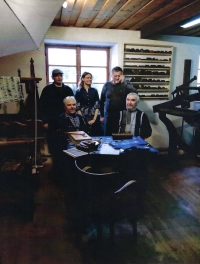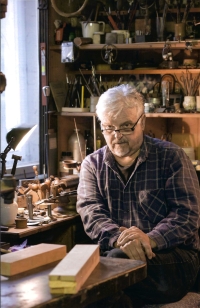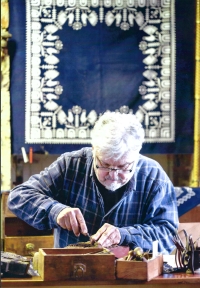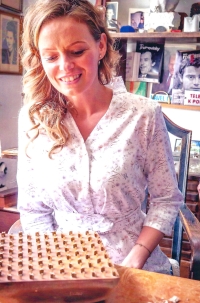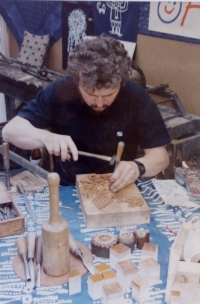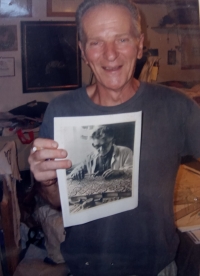The blueprint followed him throughout his life
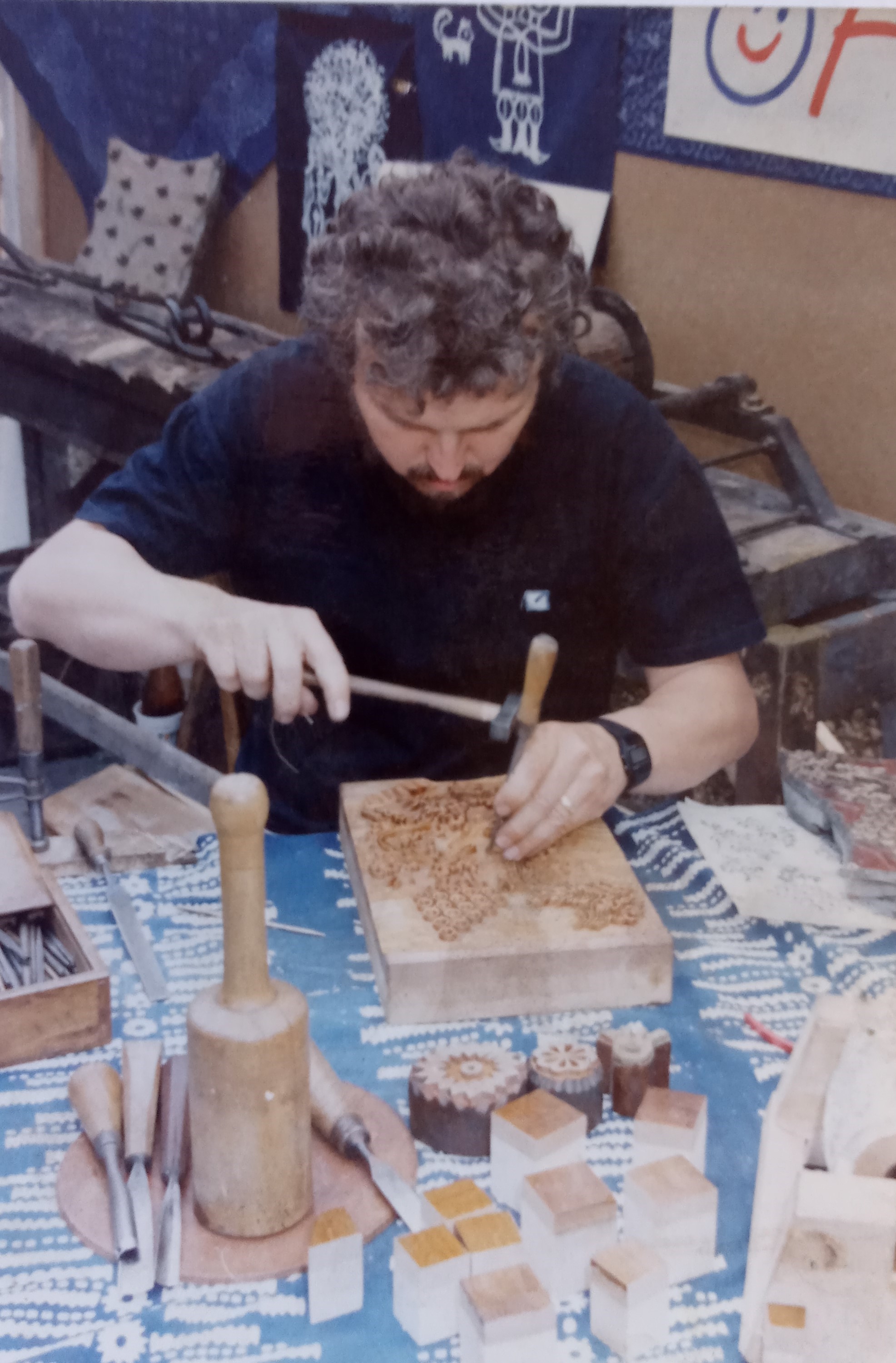
Stáhnout obrázek
Milan Bartoš was born in Dvůr Králové nad Labem on 17 October 1951. His grandfather was a small businessman who had a pattern-making workshop. His father and mother continued the family tradition. After the communist coup in 1948, part of the workshop equipment was confiscated from the family. The parents were forced to start working as employees in the Tiba textile factory in Dvůr Králové. Milan Bartoš was influenced by his family‘s craft tradition and folk art. After finishing school, he started working as a copper mould engraver at the Tiba textile factory in Dvůr Králové. In 1975 he got married. He needed to support his family, so he worked for some time in better paid jobs as a fire truck driver and later in the Detva Bratislava manufacturing company. After returning to Dvůr Králové, he returned to the production and repair of blueprint moulds in his own workshop. At the beginning of the 1980s, he added a partner, Jaroslav Plucha, to his workshop, with whom he still cooperates today. His son Tomáš also joined the workshop, so that the last blueprint workshop in the Czech Republic gained a successor. In 2020, Milan Bartoš and Jaroslav Plucha were awarded by the Ministry of Culture of the Czech Republic as „Carriers of the tradition of folk crafts“. Milan Bartoš raised two sons, Jan and Tomáš, and was still living in Dvůr Králové nad Labem at the time of filming (2024).
